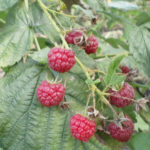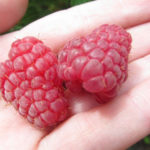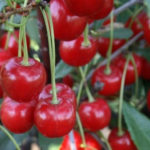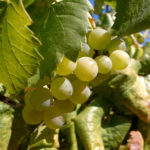Gooseberry variety Chernomor
Gooseberry varieties created at the end of the last century through the efforts of Soviet breeders still enjoy the attention of gardeners. The great value of these varieties is determined by their good winter hardiness and resistance to the most formidable disease of the culture - powdery mildew. Among the varieties already tested by time, the dark-colored Chernomor can be distinguished. Its author K.D. Sergeeva, to get a novelty, pollinated seedling 21 - 52 with a mixture of pollen collected from already known Date, Green Bottle, Brazilian and Seedling Mauer. In 1979, an application for registration of the novelty was submitted by the Federal State Budgetary Scientific Institution “Federal Scientific Center named after I.V. Michurin ". The variety has been on variety testing since 1980. It was entered into the State Register of Breeding Achievements of Russia in 1994 and allowed for cultivation in the Central Region, which includes 8 regions - Ivanovo, Vladimir, Bryansk, Kaluga, Moscow, Tula, Ryazan and Smolensk.
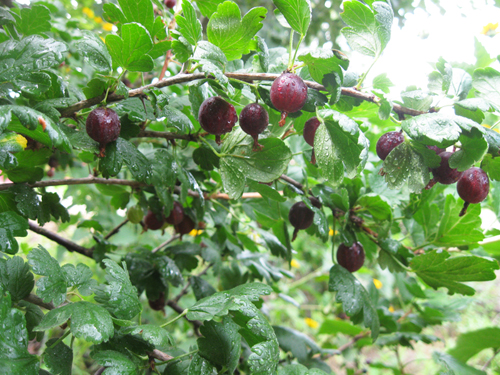
Description
The plant is vigorous, its height reaches 1.5 meters. At the same time, the gooseberry bush is not too sprawling, as if compressed, with a dense crown. Average number of basal shoots. The branches of Chernomor are directed vertically upward, the degree of branching is moderate. The growing shoots are medium, straight, sometimes with a hanging top, the bark is not pubescent, light green in color with an anthocyanin coloration in the upper part. Lignified shoots of medium size, light. Shoots with weak spine. Spines, as a rule, single, sparse, short or medium in length, straight or slightly curved, thin, dark-colored, dull, growing downward, localized in the lower part of the shoot. There are no spines. The buds of the variety are small, non-pubescent, oblong with a pointed tip, light, grow, deviating from the shoot. The trail of a fallen leaf is rounded.
The leaves of Chernomor are small, medium density, dark green in color, the surface is convex, not pubescent, shiny, smooth or folded. The main veins are not colored. The shape of the gooseberry leaf blade is three- or five-lobed, the notches between the lobes are deep. The central lobe rises above the lateral ones, its apex is sharpened, and the lateral edges are cut to the base. The length of the lateral lobes is medium, they have a rounded shape, the angle of connection between the veins is sharp. The basal lobes are poorly developed, their veins are spread. The leaf has a straight base, sometimes with a shallow notch. The angle between the petiole and the base of the plate is most often straight. The petiole is of normal length and thickness, covered with sparse glandular pubescence in the lower part, at an angle of 30 ° C to the shoot. The inflorescence of the variety consists of 2 - 3 medium-sized flowers. Corolla is elongated, brightly colored. Sepals are loose, bent upward, somewhat elongated, brightly colored. Ovary with anthocyanin coloration, covered with weak pubescence.
The berries of Chernomor are small, the mass described by the State Register is about 3.0 grams (over the years of research from 1980 to 1984, the weight of the berries was 4.8 grams), oval or round-oval in shape. The calyx is long and large, full, closed. The skin is not too thick, but rather firm, with barely noticeable pubescence or hairless, a waxy coating is present. Not quite ripe gooseberry fruits are dark red. When fully ripe, they become almost black. The venation is weak, the weakly branched veins are lighter than the main color; when fully ripe, they become almost invisible. The taste is harmonious, sweet and sour, but with a predominance of sweetness. Assessment of tasters 4.3 points. The correlation between the weight of the fruit and the number of seeds is 0.74. The number of seeds per unit of berry weight is small - 2.6 ± 0.2. 100 grams of raw product contains: the sum of sugars 8.4 - 12.2%, titratable acids 1.7 - 2.5%; pectin 5.6 - 6.8%; ascorbic acid 29.3%. The peduncle is long and thin, with a slight anthocyanin coloration at the base.
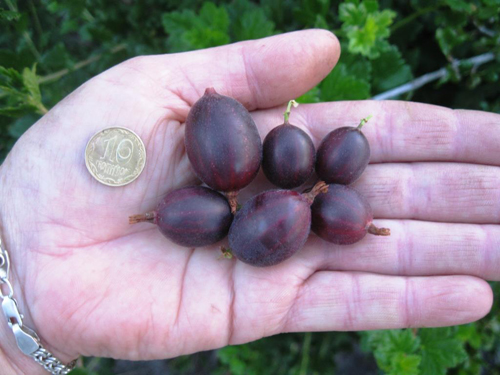
Variety characteristics
- Chernomor has good early maturity.Already in the second year after planting, a harvest can be expected;
- the ripening period was determined by the State Register as medium late. But some gardeners note that in the conditions of the Moscow region, the gooseberry ripens at an earlier date;
- the yield of marketable fruits during the years of the study was 7.0 t / ha. According to VNIISPK, this figure is 10.3 t / ha. The minimum indicator is 2.1 kg from one bush, the maximum is 4.0 kg;
- self-fertility is low, at the level of 5-14% of the total yield. In order for our hero to be able to show the maximum level of yield and size of berries, varieties should be planted nearby that bloom with him at the same time;
- decent immunity. The species has good resistance to powdery mildew. Resists pests well, for example, fire;
- strong skin protects gooseberries from cracking and makes mechanical harvesting possible;
- drought resistance is good. The plant is able to withstand even a long period of lack of moisture. Chernomor is also valued for its resistance to other unfavorable climatic manifestations;
- the variety showed high winter hardiness, allowing the plant to withstand the complex effects of the external environment during the winter and early spring periods;
- the transportability of the fruits is good; if the storage standards are observed, keeping quality does not fail;
- the way of using the crop is universal. Berries, pleasant to the taste, are consumed in their natural form. The fruits are great for processing. Due to the high content of pectins, excellent marmalade or jelly is obtained from the pulp. In addition, this variety is considered one of the best for making wine.
Planting and leaving
Planting annual seedlings of Chernomor is best done in autumn - at the end of September or early October. Gooseberry is a thermophilic and photophilous crop, therefore, the sunniest places should be allocated for planting. Avoid areas where subsoil water rises more than 1.5 meters to the soil surface. In such areas, the root system will suffer, and after it the entire bush. After planting, the plant needs regular watering. An adult shrub is moisturized moderately, taking into account natural rainfall. Fertilizers that combine organic matter and mineral fertilizers are required. Thinning, sanitary and anti-aging pruning is also important for our hero. The variety can be grown as a standard form, but in conditions of too hot climate, it is still preferable to bush, ordinary. Gooseberries propagate easily with the help of layering and green cuttings.
Chernomor is quite popular among gardeners who respect the culture for its high productivity, unpretentious care, good taste and the possibility of universal use. The variety is rated highly, claiming that it can outperform many new varieties. The almost complete absence of thorns will save hands during harvest. A high level of winter hardiness and resistance to powdery mildew are the main qualities that experienced gardeners pay attention to. These indicators are quite reliable in the region of gooseberry cultivation, as well as drought tolerance, which is confirmed by numerous positive reviews. A small minus is the insufficiently large size of the fruits. There is some controversy about taste, while many people rate the taste as very good, some still remain dissatisfied with the lack of zest, calling the taste simple.

